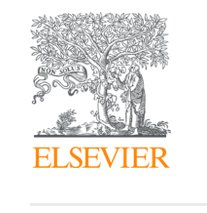An annual cycle of diatom succession in two contrasting Greenlandic fjords: from simple sea-ice indicators to varied seasonal strategists
New publication by Tiia Luostarinen, Sofia Ribeiro, Kaarina Weckström, Mikael, Sejr, Lorenz Meire, Petra Tallberg, Maija Heikkilä

Abstract:
We recorded diatom species succession over one full year (May 2017–May 2018) using automated sediment traps installed in two contrasting Greenlandic fjords: the seasonally ice-covered Young Sound in high-arctic Northeast Greenland and the nearly sea-ice free Godthåbsfjord in subarctic Southwest Greenland. The traps were positioned at differing water depths (37 m in Young Sound vs. 300 m in Godthåbsfjord). Distinct differences between the study sites were observed in both sediment and diatom fluxes. In Young Sound, total diatom flux was extremely seasonal and as high as 880 × 106 valves m−2 d−1 in the spring. In Godthåbsfjord, total diatom flux was more stable throughout the year, with a maximum of 320 × 106 valves m−2 d−1 in the summer. The diatom assemblage in Young Sound was dominated by the sea-ice species Fragilariopsis oceanica, Fragilariopsis reginae-jahniae and Fossula arctica, which exhibited pulse-like deposition in the trap during and after the ice melt. In Godthåbsfjord, the fluxes were dominated by Chaetoceros (resting spores), while the remaining assemblage was characterised by the cold-water indicator species Detonula confervacea (resting spores) and Thalassiosira antarctica var. borealis (resting spores) together with Fragilariopsis cylindrus. Our data show that, F. oceanica, F. reginae-jahniae and F. arctica exhibit similar seasonal behaviour and a clear link to sea ice. Fragilariopsis cylindrus seems to have a more flexible niche, and based on our study, cannot be considered an unequivocal ice indicator. Taking into account these ecological and seasonal preferences of individual diatom species is crucial when reconstructing past sea-ice conditions both qualitatively and quantitatively.
